
By Mary Mihajlov
 |
IntroductionFluorescence is simply the process by which shortwave light energy is absorbed and reemitted as long wave light energy. It is most often observed under a UV or black light. If you’ve ever been to a club that used black lights for lighting, you may have noticed that any white clothing you were wearing was glowing or that your dance partner’s teeth were glowing. That “glowing” was the process of fluorescence. Items you encounter everyday fluoresce under a black light. For example: white paper. Paper is treated with fluorescent compounds to make it appear brighter and whiter. Below: Scorpion and detail shot |
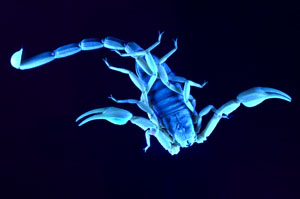 |
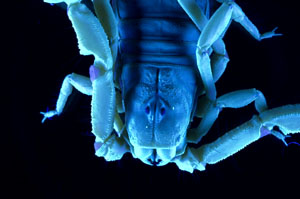 |
ApplicationsFluorescence illumination is applied in a currently being applied in many ways. US currency contains threads in the larger denominations that fluoresce under black lights to protect against counterfeiting. New York state drivers’ licenses have a seal imprinted on each ID that is only visible under a black light. Postage stamps are also printed with inks that fluoresce. Fluorescence also has several applications in the fields of biochemistry and medicine. In the auto sequencing of DNA (specifically the chain termination method), molecules can be tagged with a “fluorescent label” making it easy to identify the terminating molecule. Fluorescence has also been used in the study of the structure and formations of DNA. Perhaps the best know use of fluorescent illumination is of that in the forensic science field. Television shows such as CSI often depict an investigator combing over a crime scene with a black light. Fluorescent illumination is often used in this field to detect fibers, hairs, fingerprints, and body fluids. Fluorescent illumination can also be used to identify different gems and minerals. Below: $20 bill and New York state driver's license detail |
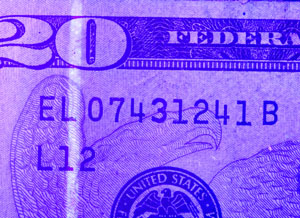 |
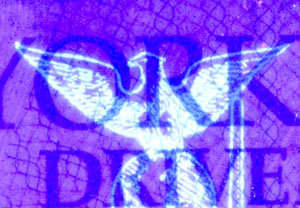 |
How to Photograph Specimens Using Fluorescent IlluminationEquipment Needed:
Below: Two Examples of fluorescent minerals |
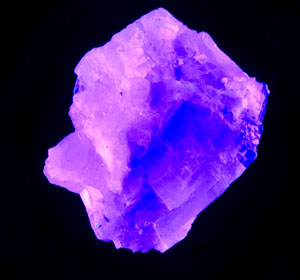 |
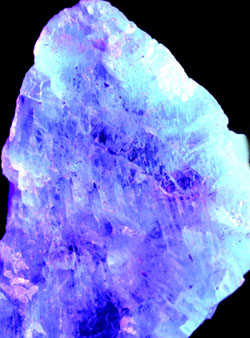 |
Content and Photography by Mary Mihajlov
Contact author.
Links:
http://en.wikipedia.org/wiki/Fluorescence
http://www.pti-nj.com/fluorescence.html
Return to
index of articles
by students on the 'Principles and techniques of photomacrography'
course, November 2006,
Biomedical Photographic Communications (BPC)
program at the Rochester Institute of Technology (RIT).
Article hosted on Micscape
Magazine (Microscopy-UK).